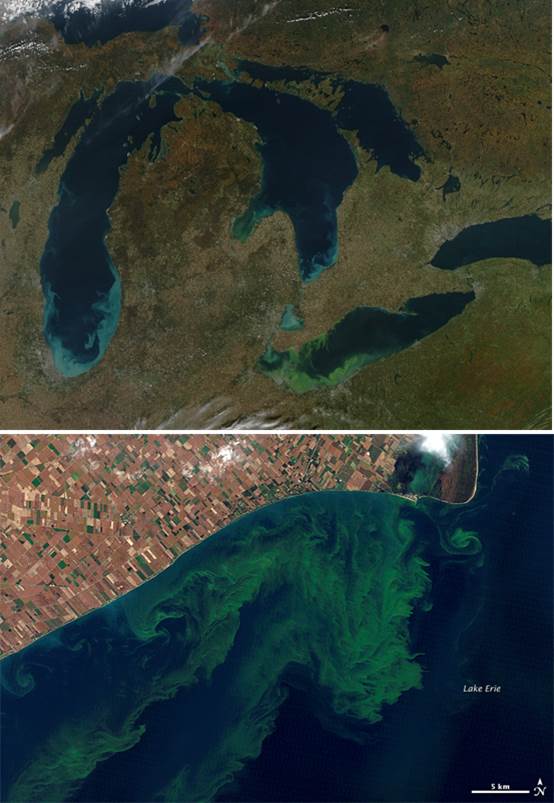Section II: Global Water Resources Case Studies
Water scarcity continues to be a challenge in many parts of the globe, particularly in less-developed countries. Experts estimate that as many as 2 billion of us lack access to a safe drinking water supply. Because we have a long history of disposing of our wastes in the nearest waterway and often building large cities in very dry landscapes, global concerns about water availability and quality have long been at the forefront of environmental issues.
This text presents seven water-related case studies. These focus on current environmental problems from around the globe and range from location specific (nutrient enrichment in the Gulf of Mexico) to global (ocean acidification), and from comparatively straightforward (water diversion in South Florida and the Everglades) to complex (multiple stressors in the Mediterranean Sea). In each of these case studies, we present a variety of exercises that incorporate scientific data so that you can appreciate the role science plays in addressing environmental issues, including the complexities and connections important to consider when tackling issues like the protection of global water quality.
Before beginning these case studies, you may need to review some of the basics of water and aquatic ecosystems linked here. In addition to the general resources provided, each case study will include specific resources chosen to help you understand the specific concepts associated with that issue.

Background Materials:
For a general overview of water resources, go to www.usgs.gov/water/.
Scroll down until you see four sections. Read “Streams, Lakes, and Reservoirs” and “Groundwater, Aquifers, and Wells” to review basic information on surface and ground water. Since many of the case studies in this section focus on water quality, also review the section entitled “Quality of Water Resources.”
For lakes, visit http://www.lakeaccess.org/ecology/lakeecologyprim10.html. At this site, you can review several important topics: trophic levels and food webs; energy flow; and habitat types in lakes.
For streams/rivers, visit http://www.d.umn.edu/~seawww/depth/rivers/03.html.
This web site gives a good overview of stream dynamics, habitat types in flowing waters, and land-water interactions.
For oceans, go to http://oceanservice.noaa.gov/education/literacy/ocean_literacy.pdf. This primer on oceans will give you some background on the ABC’s of oceans and how humans and oceans are interconnected.
For wetlands, http://bcwetlands.ca/wp-content/uploads/WetlandPrimer_WSP_2010.pdf gives a brief overview of what a wetland is and then focuses on the important services that wetlands provide to humans.
For more information on the vital role of water in sustaining life, visit http://www.nasa.gov/vision/earth/everydaylife/jamestown-water-fs.html
Case Study 2.2: The Everglades: Changing Hydrology
Case Study 2.3: Mediterranean Sea: One System, Many Stressors
Case Study 2.4: Gulf of Mexico: Dead Zone
Case Study 2.5: Restoration: A Tale of Two Rivers
Case Study 2.6: Ocean Acidification
Case Study 2.7: Ground Water: What Lies Beneath
Case Study 2.8: China`s Three Gorges Dam (TGD): Costs vs. Benefits


